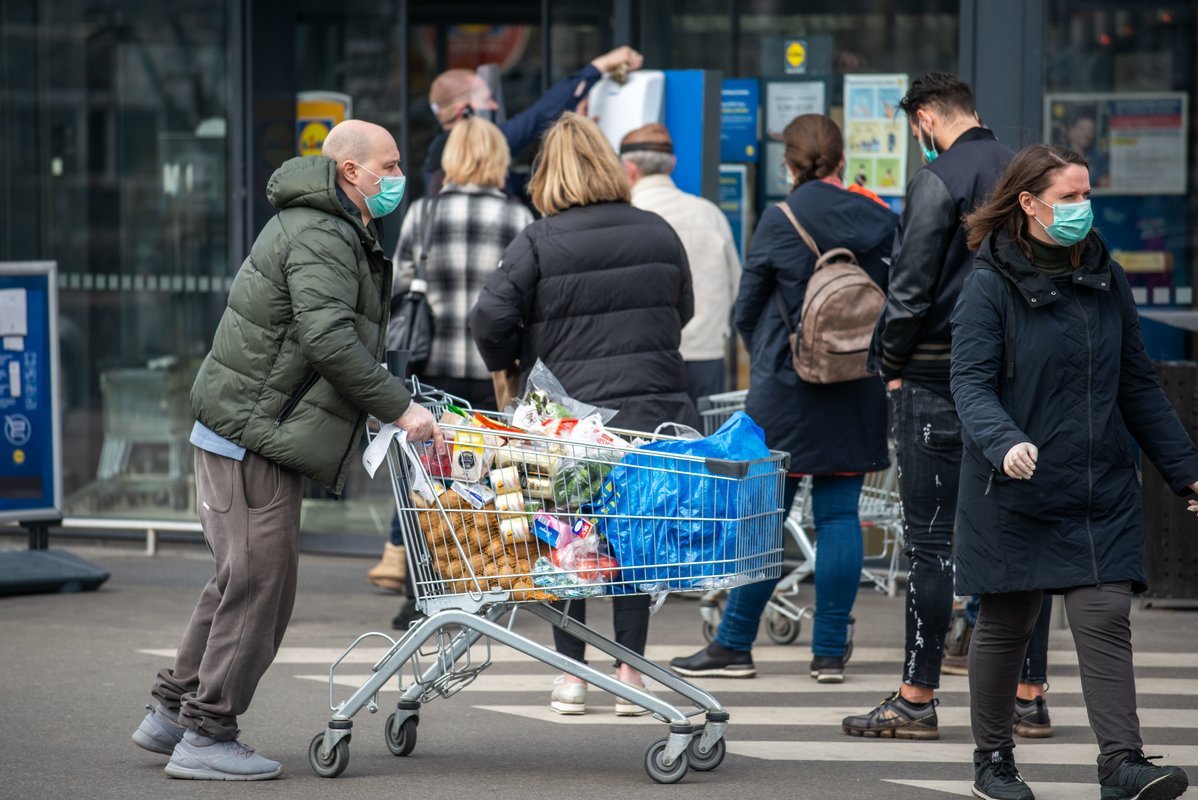
[ad_1]
On Friday, Vitas Vasiliauskas, chairman of the Board of the Bank of Lithuania (LAC), shared such forecasts. In his opinion, the worst case scenario will not materialize and the country’s gross domestic product (GDP) will not decrease as much as projected only after the start of quarantine this year.
“The state of economic health appears to be stabilizing, but the economy still needs intensive therapy, and long-term rehabilitation still awaits a full recovery,” said the head of the central bank, adding that Lithuania’s economic situation is slightly better than what we forecast in March. .
Based on the most likely updated scenario, Lithuania’s GDP is expected to drop 9.7 percent this year. But next year it should grow by more than 8 percent.
According to V. Vasiliauskas, a smaller decrease can be predicted by the relatively good result of GDP in the first quarter, not as large as the expected decrease in trade and industry in April, which is probably the worst month for the country’s economy. .
Recent economic indicators (decrease in employment since the beginning of May, recovery in population movement and domestic demand, decrease in electricity consumption) suggest that the economic situation stabilized last month and will begin to recover in the second half of the year. .
The baseline scenario is based on the assumption that strict quarantine measures will be lifted in May and that demand and the economy will recover relatively slowly. Due to the impact of the pandemic, the unemployment rate is expected to rise this year to 11.9 percent, the average wage will drop 2.6 percent, and inflation will hit 0.6 percent.
At that time, the average salary in the country is expected to decrease by 2-3% this year, but it is expected to increase again next year.
The announcement of the quarantine has had a significant impact on the Lithuanian credit market. The flow of new loans decreased, the volume of loans with deferred payments increased. Within 10 weeks after quarantine was introduced, the flow of new home loans decreased by 30%, consumer and other loans by 37%, and business loans by 17%. However, the demand for loans is already normalizing, and in May, compared to April, the rate of loans increased by approximately 18 percent.
Among other things, V. Vasiliauskas pointed out that due to the economic stimulus measures, the public debt will increase significantly and reach a record high level.
“This is the money of all of society and will have to be returned,” warned the head of LAC, adding that measures to stimulate the economy must be used effectively to ensure future economic growth.
We remind you that after the quarantine began in March, LAC predicted that the Lithuanian economy would not escape the shock, but how long it will last and the economic consequences of this shock will depend on how quickly the pandemic spreads and what measures are used.
Next, LAC developed three economic development scenarios: 1) a scenario of a sharp decline and a longer recovery (GDP will decrease by 11.4% in 2020); 2) a prolonged scenario of recession and recovery (GDP will decrease by 20.8% in 2020); 3) a scenario of a sharp decline and a rapid recovery (decrease in GDP in 2020 – 3.4%).
Under the first U-shaped recession scenario, which was considered the baseline scenario, Lithuania’s exports are projected to decline to a degree similar to that of the 2009 global financial crisis, and as domestic demand falls, i. and. consumption and household investment, the economy would only recover in the medium term.
[ad_2]